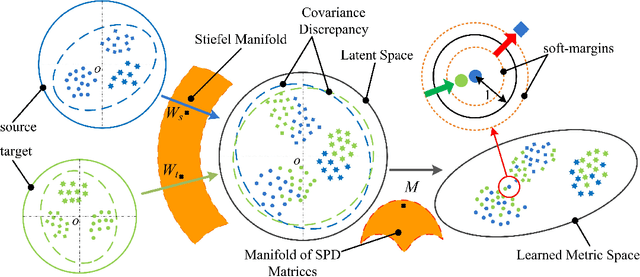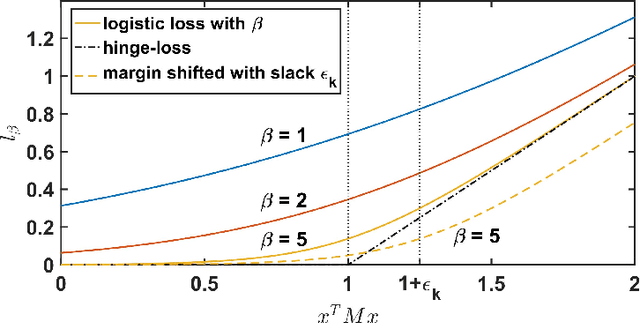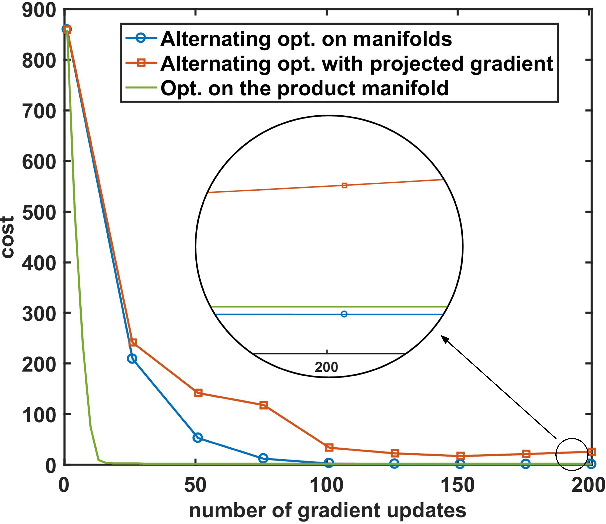Learning an Invariant Hilbert Space for Domain Adaptation
Paper and Code
Apr 17, 2017



This paper introduces a learning scheme to construct a Hilbert space (i.e., a vector space along its inner product) to address both unsupervised and semi-supervised domain adaptation problems. This is achieved by learning projections from each domain to a latent space along the Mahalanobis metric of the latent space to simultaneously minimizing a notion of domain variance while maximizing a measure of discriminatory power. In particular, we make use of the Riemannian optimization techniques to match statistical properties (e.g., first and second order statistics) between samples projected into the latent space from different domains. Upon availability of class labels, we further deem samples sharing the same label to form more compact clusters while pulling away samples coming from different classes.We extensively evaluate and contrast our proposal against state-of-the-art methods for the task of visual domain adaptation using both handcrafted and deep-net features. Our experiments show that even with a simple nearest neighbor classifier, the proposed method can outperform several state-of-the-art methods benefitting from more involved classification schemes.
 Add to Chrome
Add to Chrome Add to Firefox
Add to Firefox Add to Edge
Add to Edge